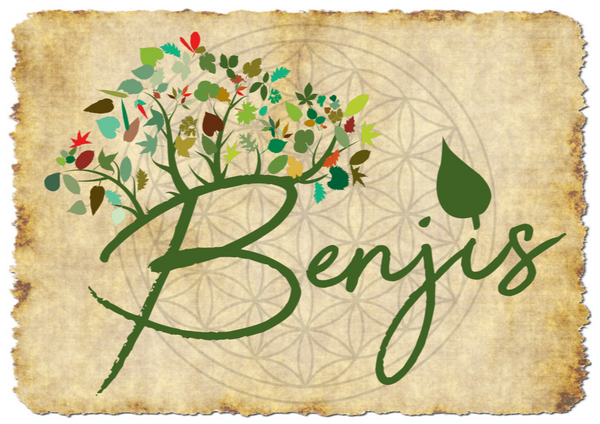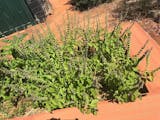The 'Blauhilde' runner bean is an old, annual, late and special blue lover variety. Already 6000 BC. There were a large number of different colors and patterns in beans, which are only being rediscovered today. This extremely robust variety produces rich harvests even under adverse circumstances. The plant produces 25-27 cm long, straight, thick fleshy and blue to purple colored fruits that remain tender for a long time. When cooking, the pods turn into a bright green, which makes them also called a magic bean. The taste is strong, aromatic and develop extremely tasty threadless schooten. Due to the late yield, this variety is well suited in combination with early varieties, for a long bean season. The plants also thrive in large pots.
General information
Plant family: Fabaceae
Life Cycle: Annual
Days to harvest: 110 days
Plant height approx.: 300 cm
Root Type: Heartroot
Nutrient requirements: Weak Eaters
Water Requirements: Means
Winter hardiness: Up to 5 °C
Location: Sunny to partially shaded
Floor: Pervious, sandy, loamy, Humos
PH: 5.5 to 6.5
Sowing and planting information
Germ Type: Dark germ
Seed Depth: 1-3 cm
Optimal germination temperature: 12-18 °C
Germination time: 10-20 days
Planting, row spacing: 15x40 cm
Optimal mixed culture: Eggplant, cucumber, pumpkin, radish, beetroot, lettuce, cabbage, celery, corn, horseradish, marigold
Unfavorable mixed culture: Pea
Subtropic climate (Mediterranean) (e. g. B. Portugal, Spain, Italy)
Sow directly into the open from March to June and in autumn from September to October.
Moderate climate (e. g. B. Germany, Switzerland, Poland)
Sow directly into the open air from mid-May to July.
General
Beans can be sown in rows or in clusters, as needed. When the eyrie is planted, five to six seeds are sown together in a planting hole, with a distance between the holes of approx. 40 cm and a row spacing of approx. 100cm. This variety needs a scaffold for climbing up. Beans are in need of heat and need at least 10 ° C to thrive, 18-25 ° C are optimal.
Bean prefers a sunny or semi-shaded and sheltered site with a nutrient-poor, sandy-loamy, humus, loosened and deep soil. Avoid waterlogging.
Additional tips
Sow seeds no deeper than 3 cm. Strand beans are more demanding than bush beans and cannot tolerate permanent moisture or drought. Since the soil is supplied with nitrogen through the roots, they should only be cut off after harvest and left in the soil. Due to the nitrogen excretions on the roots of the beans, planting in mixed culture promotes surrounding plants. All “Phaseolus vulgaris” beans are toxic uncooked because they contain phasin. In order to quickly obtain a fine, crumbly and well-drained soil, an additional incorporation of biochar and primeval rock flour is recommended.
Type of propagation
Spread occurs via seeds.
Care Plants
A deeply loosened Beet is sufficient.
Germination ability of seeds: 3-4 years
Other Names
Botanical names: Phaseolus vulgaris
English Names: Common bean, Garden bean, Pole bean, Green bean, Runner bean
German names: Fisole, Gartenbohne, Stangenbohne, Strankerl
Portuguese names: Feijão verde, Feijão-corredor
Spanische Namen: Alubias, Fabas, Fesol, Fréjol, Fríjol, Habichuelas, Judías, Porotos
French names: Haricot à rames, Haricot d'Espagne



![Runner Bean Blauhilde [Phaseolus vulgaris]](http://www.benjis.net/cdn/shop/files/StangenbohneBlauhilde-Runnerbean-Feijaocorredor-Phaseolusvulgaris-www.benjis.net.jpg?v=1708020811&width=1445)




